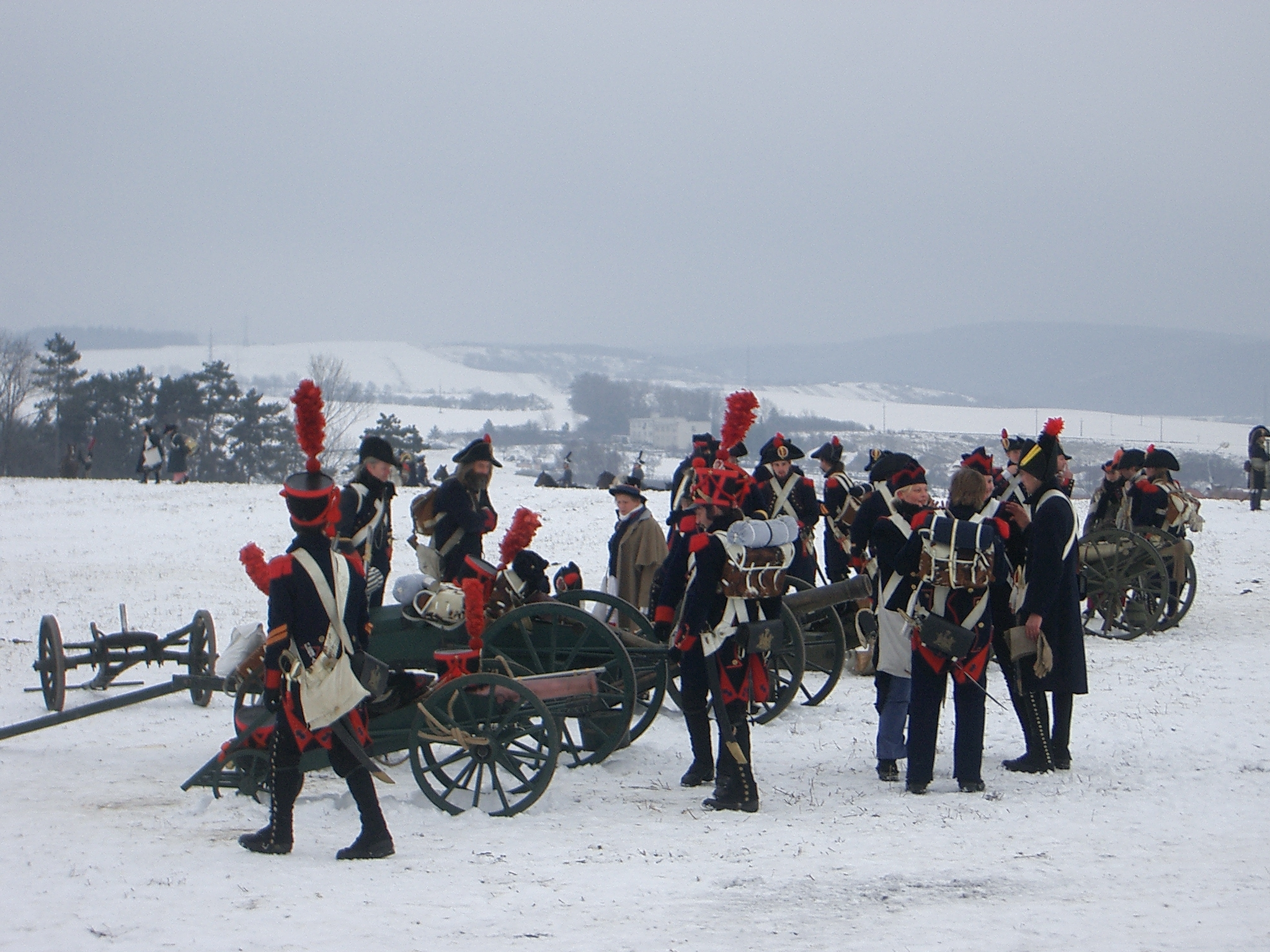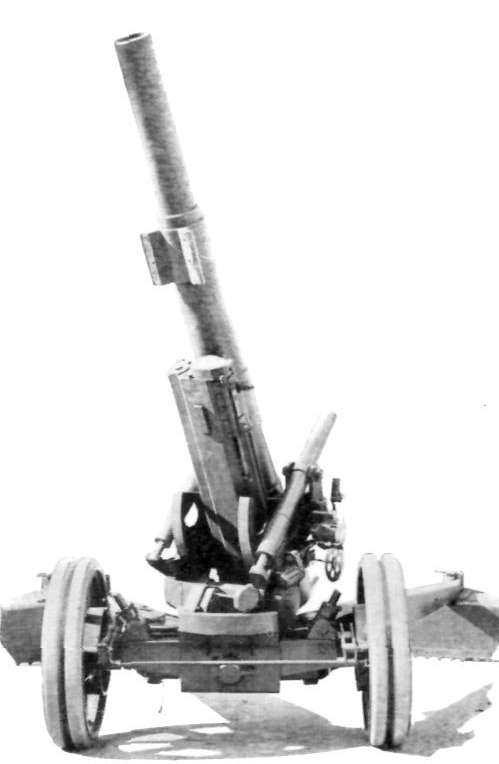|
M5 High-speed Tractor
The M5 13-ton high-speed tractor was a World War II era artillery tractor that was used by the US Army from 1942 to tow medium field artillery pieces. Design The M5 high-speed tractor was a fully tracked artillery tractor designed to tow artillery pieces that weighed up to . It could tow the gun and carry the gun's ammunition, the crew and their equipment.Ian V. Hogg, ''The American arsenal: the World War II official standard ordnance catalogue of small arms, tanks, armoured cars, artillery, anti-aircraft guns, ammunition, grenades, mines, et cetera'', Frontline Books, Barnsley, . The M5 was developed from the prototype T13 high-speed tractor, it shared the latter's Continental R6572 in-line six-cylinder petrol engine which developed at 2,900 rpm and, like the T13 before it, derived its tracks and its vertical volute spring suspension from the Stuart tank. The M5 had a maximum road speed of with a range of . [...More Info...] [...Related Items...] OR: [Wikipedia] [Google] [Baidu] |
Artillery Tractor
An artillery tractor, also referred to as a gun tractor, is a specialized heavy-duty form of tractor unit used to tow artillery pieces of varying weights and calibres. It may be wheeled, tracked, or half-tracked. Traction There are two main types of artillery tractors, depending on the type of traction: wheeled and tracked. * Wheeled tractors are usually variations of lorries adapted for military service. * Tracked tractors run on continuous track; in some cases are built on a modified tank chassis with the superstructure replaced with a compartment for the gun crew or ammunition. In addition, half-track tractors were used in the interwar period and in World War II, especially by the Wehrmacht. This type of tractor was mostly discontinued postwar. History World War I The first artillery tractors were designed prior to the outbreak of World War I, often based on agricultural machines such as the Holt tractor. Such vehicles allowed the tactical use of heavier guns ... [...More Info...] [...Related Items...] OR: [Wikipedia] [Google] [Baidu] |
Field Artillery
Field artillery is a category of mobile artillery used to support army, armies in the field. These weapons are specialized for mobility, tactical proficiency, short range, long range, and extremely long range target engagement. Until the early 20th century, field artillery were also known as foot artillery, for while the guns were pulled by Working animal, beasts of burden (often horses), the gun crews would usually march on foot, thus providing fire support mainly to the infantry. This was in contrast to horse artillery, whose emphasis on speed while supporting cavalry units necessitated lighter guns and crews riding on horseback. Whereas horse artillery has been superseded by self-propelled artillery, field artillery has survived to this day both in name and mission, albeit with motor vehicles towing the guns (this towed artillery arrangement is often called mobile artillery), carrying the crews and transporting the ammunition. Modern artillery has also advanced to rapidly ... [...More Info...] [...Related Items...] OR: [Wikipedia] [Google] [Baidu] |
British Columbia
British Columbia is the westernmost Provinces and territories of Canada, province of Canada. Situated in the Pacific Northwest between the Pacific Ocean and the Rocky Mountains, the province has a diverse geography, with rugged landscapes that include rocky coastlines, sandy beaches, forests, lakes, mountains, inland deserts and grassy plains. British Columbia borders the province of Alberta to the east; the territories of Yukon and Northwest Territories to the north; the U.S. states of Washington (state), Washington, Idaho and Montana to the south, and Alaska to the northwest. With an estimated population of over 5.7million as of 2025, it is Canada's Population of Canada by province and territory, third-most populous province. The capital of British Columbia is Victoria, British Columbia, Victoria, while the province's largest city is Vancouver. Vancouver and its suburbs together make up List of census metropolitan areas and agglomerations in Canada, the third-largest metropolit ... [...More Info...] [...Related Items...] OR: [Wikipedia] [Google] [Baidu] |
Red Army
The Workers' and Peasants' Red Army, often shortened to the Red Army, was the army and air force of the Russian Soviet Republic and, from 1922, the Soviet Union. The army was established in January 1918 by a decree of the Council of People's Commissars to oppose the military forces of the new nation's adversaries during the Russian Civil War, especially the various groups collectively known as the White Army. In February 1946, the Red Army (which embodied the main component of the Soviet Armed Forces alongside the Soviet Navy) was renamed the "Soviet Army". Following the dissolution of the Soviet Union it was split between the post-Soviet states, with its bulk becoming the Russian Ground Forces, commonly considered to be the successor of the Soviet Army. The Red Army provided the largest land warfare, ground force in the Allies of World War II, Allied victory in the European theatre of World War II, and its Soviet invasion of Manchuria, invasion of Manchuria assisted the un ... [...More Info...] [...Related Items...] OR: [Wikipedia] [Google] [Baidu] |
Diamond T 4-ton 6x6 Truck
Diamond is a solid form of the element carbon with its atoms arranged in a crystal structure called diamond cubic. Diamond is tasteless, odourless, strong, brittle solid, colourless in pure form, a poor conductor of electricity, and insoluble in water. Another solid form of carbon known as graphite is the chemically stable form of carbon at room temperature and pressure, but diamond is metastable and converts to it at a negligible rate under those conditions. Diamond has the highest hardness and thermal conductivity of any natural material, properties that are used in major industrial applications such as cutting and polishing tools. Because the arrangement of atoms in diamond is extremely rigid, few types of impurity can contaminate it (two exceptions are boron and nitrogen). Small numbers of defects or impurities (about one per million of lattice atoms) can color a diamond blue (boron), yellow (nitrogen), brown (defects), green (radiation exposure), purple, pink, oran ... [...More Info...] [...Related Items...] OR: [Wikipedia] [Google] [Baidu] |
GMC CCKW 2½-ton 6×6 Truck
The GMC (automobile), GMC CCKW, also known as "Jimmy", or the G-508 by its List of U.S. military vehicles by supply catalog designation, Ordnance Supply Catalog number, was a highly successful series of Off-road vehicle, off-road capable, 2 1/2-ton 6×6 truck, 2-ton, 6×6 trucks, built in large numbers to a standardized design (from 1941 to 1945) for the U.S. Army, that saw heavy service, predominantly as cargo trucks, in both World War II and the Korean War. The original "Deuce and a Half", it formed the backbone of the Red Ball Express that kept World War II allies, Allied armies supplied as they pushed eastward after the Normandy invasion. The CCKW came in many variants, including open or closed cab, long wheelbase (LWB) CCKW-353 and short (SWB) CCKW-352, and over a score of specialized models, but the bulk were standard, general purpose, cargo models. A large minority were built with a front mounted winch, and one in four of the cabs had a machine-gun mounting ring above the ... [...More Info...] [...Related Items...] OR: [Wikipedia] [Google] [Baidu] |
Vertical Volute Spring Suspension
The vertical volute spring suspension system is a type of vehicle suspension system which uses volute springs to compensate for surface irregularities. This type of the suspension system was mainly fitted on US and Italian tanks and armored fighting vehicles starting from throughout the 1930s up until after the end of the Second World War in 1945. Principle The horizontal arms connected to the road wheels are cranks that drive the vertical arm up and down. The vertical arm connects to the volute spring in the box-shaped area above. Development During the 1930s, many innovations in the components of light tanks would make US tanks considerably more reliable. These included rubber-bushed tracks, rear mounted radial engines and the vertical volute spring suspension. A volute spring is a compression spring in the form of a cone (a volute). Under compression the coils slide over each other, affording a long travel. The result is more stable and powerful than any leaf, coil, ... [...More Info...] [...Related Items...] OR: [Wikipedia] [Google] [Baidu] |
155 Mm Howitzer M1
The 155 mm Howitzer M114 is a towed howitzer developed and used by the United States Army. It was first produced in 1941 as a medium artillery piece under the designation of 155 mm Howitzer M1. It saw service with the US Army during World War II, the Korean War, and the Vietnam War, before being replaced by the M198 howitzer. The gun was also used by the armed forces of many nations. The M114A1 remains in service in some countries. Development Early development After the end of the First World War a board later named the Westervelt Board after its president, Brigadier General William I. Westervelt, was convened to assess the artillery experience of the combatant powers and map out future directions for the US Army artillery. The conclusion of the board vis-a-vis corps (heavy field) artillery was that an ideal heavy howitzer should have range of at least and allow the elevation of 65°B. P. Joyce, New "Four-Point-Seven" GunThe Field Artillery Journal (volume XII) 1922 p. ... [...More Info...] [...Related Items...] OR: [Wikipedia] [Google] [Baidu] |
105 Mm Howitzer M2
The M101A1 (previously designated Howitzer M2A2 on Carriage M2A2) howitzer is an artillery piece developed and used by the United States. It was the standard U.S. light field howitzer in World War II and saw action in both the European and Pacific theaters and during the Korean War. Entering production in 1941, it quickly gained a reputation for accuracy and a powerful punch. The M101A1 fires 105 mm high explosive (HE) semi-fixed ammunition and has a range of or 7 miles, making it suitable for supporting infantry. History Development and designation After World War I, the U.S. Army Ordnance Department studied various captured German 105 mm-caliber howitzers and developed the 105 mm Howitzer M1920 by using the Carriage M1920. A box trail carriage design (the M1925E carriage) and two other split trail designs (the T1 and T2) were also developed, but the original split trail design was found superior after testing. After being selected, the piece was standardized in ... [...More Info...] [...Related Items...] OR: [Wikipedia] [Google] [Baidu] |
Winch
A winch is a mechanical device that is used to pull in (wind up) or let out (wind out) or otherwise adjust the tension (physics), tension of a rope or wire rope (also called "cable" or "wire cable"). In its simplest form, it consists of a Bobbin, spool (or drum) attached to a hand crank (mechanism), crank. Traditionally, winches on ships accumulated wire or rope on the drum; those that do not accumulate, and instead pass on the wire/rope (see yacht photo above), are called Capstan_(nautical), capstans. Despite this, sailboat capstans are most often referred to as winches. Winches are the basis of such machines as tow trucks, steam shovels and elevators. More complex designs have gear assemblies and can be powered by electric, hydraulic, pneumatic or internal combustion drives. It might include a solenoid brake and/or a Mechanical brake stretch wrapper, mechanical brake or ratchet (device), ratchet and pawl which prevents it unwinding unless the pawl is retracted. The rope may b ... [...More Info...] [...Related Items...] OR: [Wikipedia] [Google] [Baidu] |







